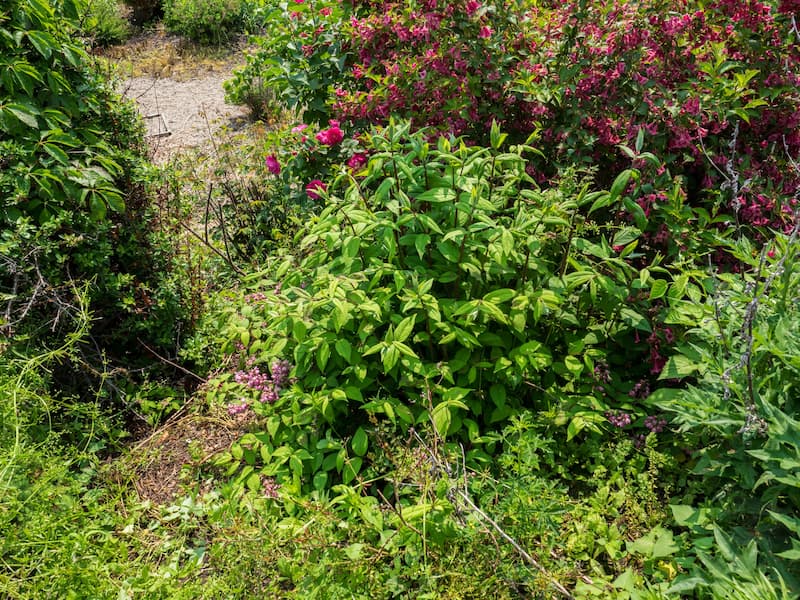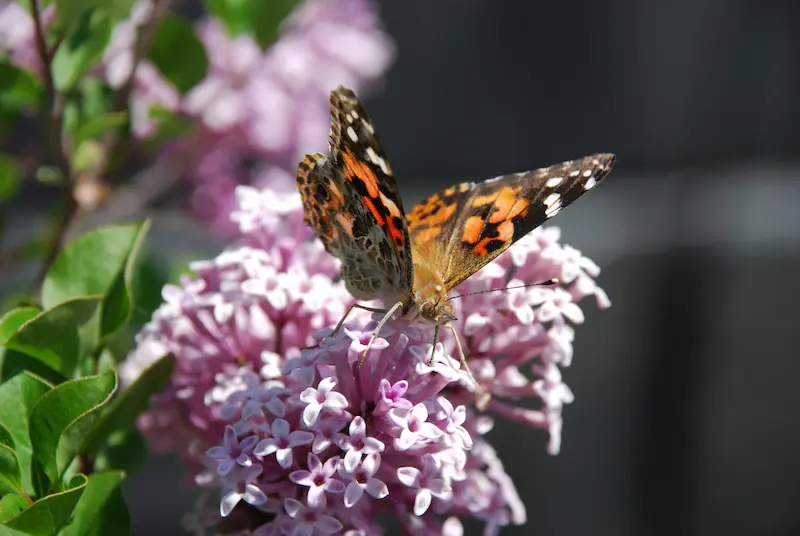Your cart is currently empty!
Hardening Off: Last Stop Before Planting Out
Discover a simpler method for hardening off seedlings and creating protective environments for your plants to avoid sunscald and promote healthy growth.
Your cart is currently empty!
Lilacs are one the great Ottawa landscape plants! There are many reasons to love them with their sweet perfume and those beautiful amethyst – hued blooms that butterflies adore. Not only do they grow most anywhere there is lots of sun, they are generally tough as nails, require no maintenance and have relatively few insect or disease problems. For more on lilac care, click here.
If you are shopping for a lilac shrub, consider the Preston Lilac ‘Miss Canada’– developed right here in Ottawa at the Experimental Farm. These lilacs are distinguished by their late season of flowering (early June) which follows the more common May-blooming French lilacs. At maturity, this lilac will grow to be around 10 feet tall and 8 feet wide. It is a bit leggy, has a medium growth rate, and a life expectancy of 30 years.
Botanical Name: Syringa
Genus: Syringa
En français: Lilas
Blooms:
Sun / Shade:
Water: If it gets very dry, give a thorough soaking with a hose
Pollinators:
Care:

Another terrific option is Bloomerang Lilac which first blooms in late May, takes a short break in June, and then starts up again in July to September. Its flowers are a pretty shade of pale purple that deepens a bit during the second re-bloom. And while the common French lilacs can grow into large, lanky shrubs over 10’ tall, Bloomerang stays a more compact 4-5’ tall.

A third option to consider is the Dwarf Korean Lilac Standard – a tree form of the lilac shrub which grows about 6-8’tall on a slender tree stem. These lilacs are best when under planted with shorter shrubs or perennials to create a ‘layerd’ effect. With their globe of pinkish-purple blooms, the dwarf lilac tree makes an excellent landscape feature plant or focal point in a butterfly or hummingbird garden.

The two most common mistakes I see when it comes to lilacs are location and pruning. First and foremost, if they don’t get enough sun, they’ll simply grow leaves and refuse to flower. The second issue comes from pruning. Since lilacs form their flower buds in the summer, pruning in the fall or in the spring will eliminate the May/June floral display. Pruning is rarely required, but if you feel you must, be sure to do it immediately after the lilac blooms have faded in June.
Discover a simpler method for hardening off seedlings and creating protective environments for your plants to avoid sunscald and promote healthy growth.
Discover the joy of growing your own vegetables, herbs, and fruits to create delicious meals and enhance your sense of taste.
Remodel your garden for a private space to enjoy the outdoors, make the most of the sunny days, and socialize with our friends and family
We share the many benefits children gain from gardening, along with some clever independent plant and gardening ideas for children.
Learn the history of rock gardens and how to grow alpine plants in your garden. Discover the unique growing conditions and design tips for success.
This a summary of the most frequent comments received from 81 questionnaire responses received by Gardens Ottawa between February 8th and March 31st, 2019.
GardeningCalendar.ca gets some funding from advertisers. If you click on links and advertisements at no cost to you, the site may receive a small commission that helps fund its operation.
© 2025 J&S Calendars Ltd.
Leave a Reply
You must be logged in to post a comment.